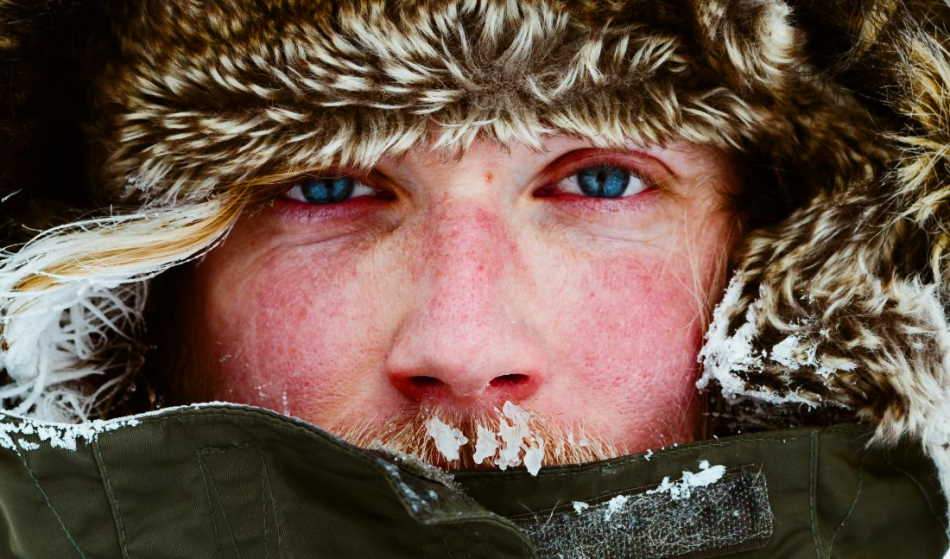Winter Allergies
Causes, Symptoms, Treatment, and Side Effects of Winter Allergies
Winter Allergies Overview
People in winter are susceptible to stay most of the time indoors. Fortunately, in cold seasons outdoor allergens may become inactive, but it also means that people would be spending more time indoors. In contrast to spring and summer allergies caused by outdoor exposure to pollen or ragweed, winter allergies are caused by indoor allergens such as dust mites, mold, pet dander, fur or cockroaches.
Winter allergies occur when you are sensitive to indoor allergens and live in a poorly ventilated area. Its symptoms are the same as other seasonal allergies and may also resemble that of a cold. Winter allergies can be avoided by adopting a few lifestyle changes and some medical assistance.

Confusing Winter Allergies to Cold Symptoms
You may get confused by cold and winter allergy symptoms as both of them are quite similar. It is possible to get allergies at any age. Because if you didn’t have any previous seasonal allergies that does not necessarily mean that the symptoms are from a cold.
Usually, symptoms that last a few weeks are due to allergies. In comparison, symptoms that appear suddenly after some duration of time in the same home may be from a cold, especially if you did not have any history of allergy.
Some symptoms that distinguish winter allergies from a cold are:
- Colds may cause fever, but allergens do not change the victim’s body temperature.
- Aches and pains follow a cold while allergies are not followed by Aches.
- Sore throats are common with colds, but allergies cause them less frequently.
- Colds do not cause skin irritation or eye irritation, whereas allergies do.
- Cold symptoms begin to fade away on their own after typically a few days, while allergies only self-resolve when the allergen is avoided.
- Coughs are more common with colds, but allergies can also cause them.
Causes of Winter Allergies
It’s good to know that you don’t have pollens in winters. But you also don’t move out often in winters. The causes of winter allergies are found inside your home. If you are suffering from an increase in winter allergy symptoms like nasal irritation, eye irritation, respiratory irritation, or skin irritation, you may be a victim of the following allergens found indoors.
- Dander: It is the dander, dead skin flakes of cats and dogs that causes acute and chronic allergic reactions in people sensitive to it
- Dust Mites: These are microscopic bugs that cause year-round indoor allergies with severe symptoms. Dust mites may be found in beddings, carpets, or furniture inside your home.
- Mold: Everyone breathes in mold spores, but for people allergic to it can trigger sneezing, cough, congestion, and itchiness. Indoor mildew and mold may be found in humid areas like bathrooms, kitchens, and basements.
- Cockroach Droppings: These recurring pests live anywhere and are not a sign of a contaminated or unhygienic home, but it is important to keep the food contained and clean up crumbs promptly. Don’t keep leaky faucets and pipes, and cover-up holes and cervices in your home will keep cockroaches off.

Preventing Winter Allergies
A simple allergic reaction can turn into a big problem with winter allergies. When it is time to turn on the heaters, the indoor air becomes even drier and leads to dry noses causing nosebleeds and peeling skin around your nose. It can boost up infection risks with various nasal irritations.
However, it may not be possible to get rid of winter allergies completely, but you can work on reducing the exposure to allergens in your surroundings. We collected some of the experts’ tips that offer the followings strategies for minimizing indoor allergen exposure in winter:
- Humidify your area in winters: when you turn on your heaters to warm your surroundings, it is recommended to use a humidifier to reduce dryness in the air. But don’t overdo it. Dust mites flourish with over 60 percent humidity and temperatures between 68 to 77 degrees Fahrenheit (20 to 25 degrees Celsius). Similarly, mold can grow faster in high humidity.
- Avoid carpeting: Carpets are a thriving home for dust mites. Use hard floorings or rugs instead.
- Daily cleanup: Dust, clean, and vacuum your area regularly. You can use a high-efficiency particulate air filter.
- Keep sheets clean: Wash your beddings in hot water to kill the dust mites. You can use hypoallergenic covers for mattresses and pillowcases to keep dust mites at bay.
- Clean your pets: Bathe pets once a week to minimize dander. However, try to keep them off your room, bed, and furniture.
Treatment of Winter Allergies
Winter allergy treatment includes medications as well as some home remedies. Let us have a look into these:
Medication
There are various over-the-counter or prescribed medications available to treat winter allergy symptoms.
Antihistamines: These are used to relieve symptoms such as itchy and watery eyes and nose, runny nose and sneezing. These may be available in the form of tablets, nasal sprays or liquid.
Corticosteroids: These are considered the most effective medications for allergic rhinitis. It helps by reducing inflammation and may be used as a nasal spray, inhaler, or pills.
Decongestants: These minimize stuffiness by shrinking the lining of the nasal passages. Decongestants are available as pills, liquids, drops, and nasal sprays. Long-term use may have negative consequences.
Leukotriene receptor antagonists: These are tablets that block the action of various chemicals that cause allergic reactions in people.
Immunotherapy is a long-term cure that helps to soothe people from allergies. Physicians can use immunotherapy to treat patients who are experiencing side effects or who are getting little to no benefit from medications.
Allergy shots and sublingual tablets are two forms of immunotherapy. These allergy shots are given for up to 3 to 5 years. It provides resistance from allergens. Sublingual tablets can handle only a few forms of allergies.
Home Remedies
Natural or home remedies may bring comfort to people suffering from winter allergies. These remedies may include:
Steam inhalation
Inhaling steam can open up the nasal passages and soothe people from allergic rhinitis symptoms. If you don’t have a steamer, you can place a container of boiling water on the table. Cover your head, face and container with a towel and inhale the steam.
Saline solution
Using saline rinse relieves stuffy nose and congestion by removing extra mucus from the nasal passage. This solution can also wash out allergens from the nose and sinuses. You can get various saline solutions without a prescription.
Conclusion
Winter allergies are caused by indoor allergens, thus cannot be completely avoided. However, you can seek medical assistance in order to help reduce allergy signs and challenges associated with winter allergies.
Written by: Madiha Ather Hashmi (April 20, 2021)
Sources
- Medically reviewed by Marc Meth, MD, FACAAI, FAAAI — Written by Zawn Villines on February 4, 2021
https://www.medicalnewstoday.com/articles/winter-allergies - By John Briley, Medically Reviewed by Bhargavi Patham, MD, PhD Last Updated: February 5, 2018
https://www.everydayhealth.com/allergies/managing-allergies/winter-allergy-symptoms.aspx - Medically reviewed by Alana Biggers, M.D., MPH — Written by Tim Jewell on December 7, 2018
https://www.healthline.com/health/allergies/winter-allergies
Medically Reviewed By

Alexandria University Hospital
I have reviewed the articles on seasonalallergies.org and I would like to say that I was very surprised.
Over years, I have seen many different articles in the field of allergy, but these articles were very interesting.
These articles were really unique, they could help many people around the world to know more about seasonal allergy, symptoms, prevention and when to seek medical advice.
These articles represent an addition in the field of Health Education not only for people with allergy but also for the whole population.
Looking for more allergy types? Find a full list of other allergy types here.
Last Updated on July 5, 2023